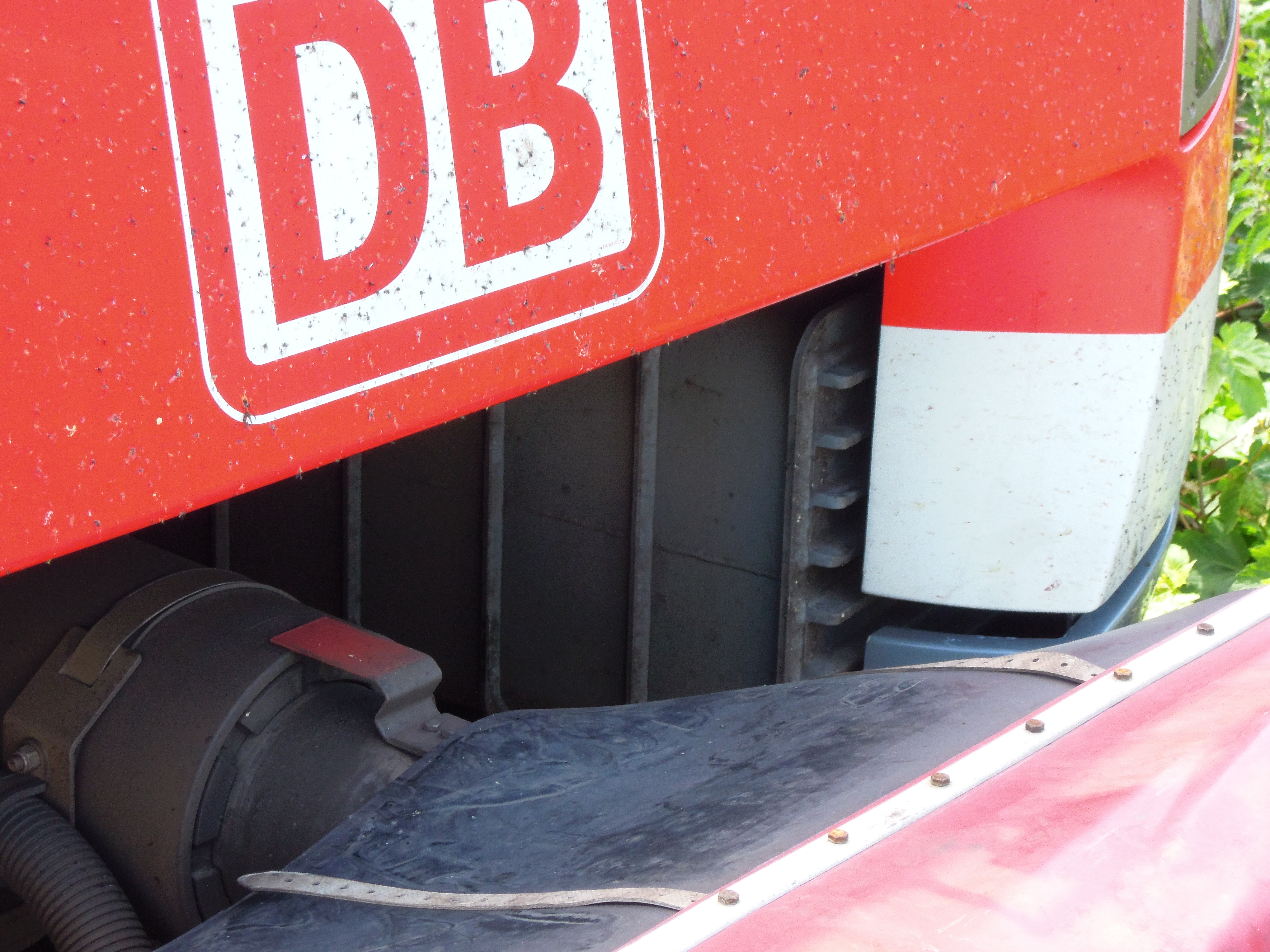EN 15227 on:
[Wikipedia]
[Google]
[Amazon]
 EN 15227 is a
EN 15227 is a
Stralsund, Hauptbahnhof (2013-02-13), by Klugschnacker in Wikipedia (4).JPG, Stadler Flirt traditional design
DB 1428 007 02 Essen Hbf.JPG, … Stadler Flirt 3 with a crash-optimized headshape
Bf Alsdorf Poststraße.jpg,
20070606-Piraeus-Desiro GTW.jpg,
Alstom Coradia LIREX (440 202-0).JPG,
European standard
European Standards (abbreviated EN, from the German name ("European Norm")) are technical standards which have been ratified by one of the three European standards organizations: European Committee for Standardization (CEN), European Committee for ...
about the crashworthiness
Crashworthiness is the ability of a structure to protect its occupants during an impact. This is commonly tested when investigating the safety of aircraft and vehicles. Depending on the nature of the impact and the vehicle involved, different crit ...
requirements for railway vehicle bodies. It was first resolved in 2008 and it is binding since 2012 for all new vehicles in the European Union.
The required energy absorption modules had major impacts on the headshape design of locomotives and passenger rolling stock. The specification is accompanied by EN 12663 (''Structural requirements of railway vehicle bodies)'' that was updated in 2008 to meet the EN 15227 scenarios.
Scenarios
The main definitions of EN 15277 look at a number of crash scenarios: * head impact of similar vehicles at a speed of * impact on a freight wagon of at a speed of * impact on a lorry at a grade crossing at a speed of * impact on a smaller object like a car at a grade crossing. For each scenario and train class there are minimum requirements on the remaining space in the driver cabin after the crash. Due to the expensive equipment there are no full body crash tests in railway applications. Instead the impact is simulated with finite element analysis and parts of the structure are validated by a real crash test (simulation and test result may not differ more than ten percent).Result
Before the time of EN 15277 the head of a locomotive was simply part of the full body of the railway vehicle. This has been replaced by a separately designed cabin that is subsequently integrated with the rest of the vehicle body. The area around the couplers is very different with the required anti-climbing protection buffers and the energy-absorption elements behind them. The rest of the headshape may come in very different designs as they are commonly made fromfiberglass
Fiberglass (American English) or fibreglass (Commonwealth English) is a common type of fiber-reinforced plastic using glass fiber. The fibers may be randomly arranged, flattened into a sheet called a chopped strand mat, or woven into glass cloth ...
or carbon fiber
Carbon fiber-reinforced polymers (American English), carbon-fibre-reinforced polymers (Commonwealth English), carbon-fiber-reinforced plastics, carbon-fiber reinforced-thermoplastic (CFRP, CRP, CFRTP), also known as carbon fiber, carbon compo ...
.
Gallery
Bombardier Talent
The Talent is a multiple unit railcar manufactured by Bombardier that was developed by Waggonfabrik Talbot in Aachen shortly before the company was acquired by Bombardier in 1995. The name ''Talent'' is an acronym in German for ''TALbot LEicht ...
traditional design
DBAG Baureihe 442.JPG, … Bombardier Talent 2 with a crash-optimized headshape
Siemens Desiro Classic
The Siemens Desiro (, , ) is a family of diesel or electric multiple unit passenger trains developed by Siemens Mobility, a division of the German Siemens AG conglomerate. The main variants are the Desiro Classic, Desiro ML, Desiro UK and the ...
traditional design
Desiro ML.JPG, … Siemens Desiro ML with a crash-optimized headshape
Alstom Coradia Continental
The Alstom Coradia is a family of diesel and electric multiple units for intercity and regional service manufactured by Alstom, with variants operating in Europe, North America, and Africa.
Design
The Coradia is a family of high-performance r ...
, series 440 in traditional design
BR1440.3.jpg, and newer series 1440 with a crash-optimized headshape
Regulations
The EN 15227 has been made mandatory by the Technical Specifications for Interoperability (TSI) decisions in 2008 - the 2008/232/CE for high-speed railway and 2008/57/EC for conventional rail. While ongoing projects were allowed to be completed all new procurements had to include the requirement since then. The comparable standards in the United States are 49CFR238 from the FRA and S-C&S-034-99 from the APTA. In an initial assessment the European standard was considered to be not equivalent and compliance with one standard would not imply compliance with the other standard. However, the required " Crash Energy Management System" of US-origin can be integrated into the EN 15227 cabin resulting in a vehicle that can be shown to be compliant in both areas.See also
*Crashworthiness
Crashworthiness is the ability of a structure to protect its occupants during an impact. This is commonly tested when investigating the safety of aircraft and vehicles. Depending on the nature of the impact and the vehicle involved, different crit ...
* Telescoping (rail cars)
In a railway accident, telescoping occurs when the underframe of one vehicle overrides that of another, and smashes through the second vehicle's body. The term is derived from the resulting appearance of the two vehicle bodies: the body of one ...
References
{{Authority control Transport and the European Union